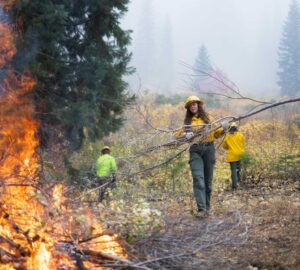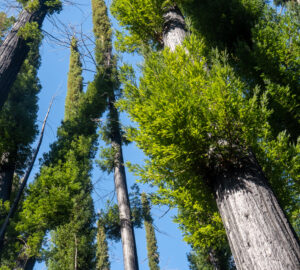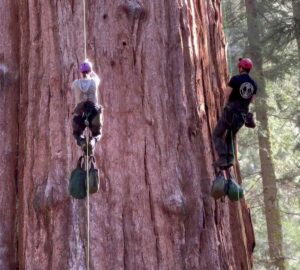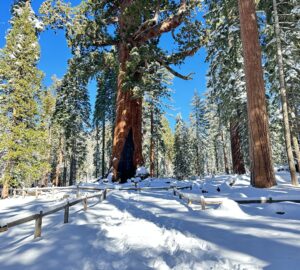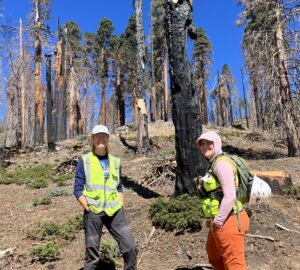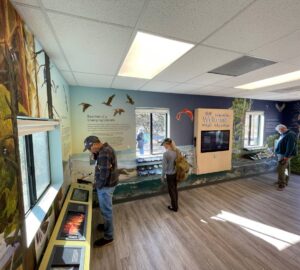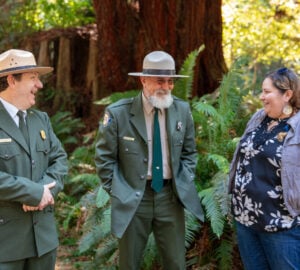To reduce the threat of severe wildfires, we need to act on climate change, protect and restore our forests, and learn to live with “good” fire.
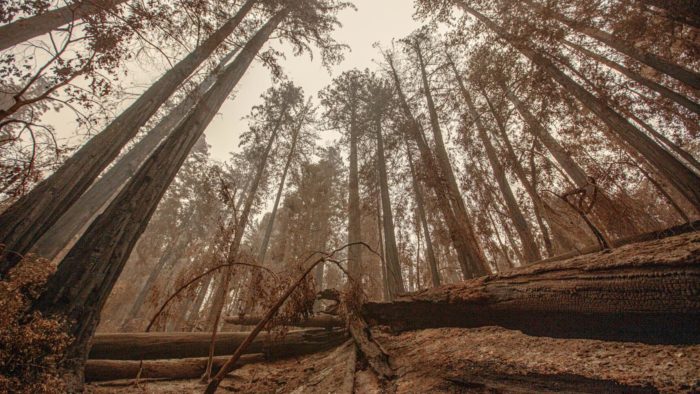
The record-breaking 2020 wildfire season shocked Californians as smoke blocked out the sun and severely degraded air quality. By mid-October, 4.25 million acres of California had burned, and fire season was still far from over. Our hearts are with the many who lost homes and livelihoods, and we are saddened by the near-complete infrastructure losses at Big Basin Redwoods State Park, and the miles of park trails that have been impacted. For this article, we focus our attention on the forest itself. Of the acres burned by mid-October, coast redwoods comprised more than 81,000 acres, including more than 11,000 acres of old growth (roughly 9 percent of all old growth left). In the giant sequoia range, roughly 16,000 acres (or 34 percent of the range) had burned, most of which is old growth. We have yet to assess the fire effects on the ground, but as with most modern wildfires, there will likely be a mix of beneficial and detrimental ecological effects.
Although this season feels overwhelming, California has always been fire prone. Conservative estimates are that 4.5 million acres burned annually prior to Euro-American settlement. These fires were started either by lightning or by Indigenous peoples who used fire as a tool to promote growth of plants for food and basketry and to clear underbrush for hunting. What is different about the 2020 wildfire season is not the acres that burned, but the severity of many of the fires. How severely a fire burns is the result of three main factors: fuel loads, topography and weather. Euro-American settlement has dramatically altered the climate, as well as fuel loads in many of our forests.
While there has been extensive debate about whether climate or forest management is to blame for this year’s fire season, the answer is resoundingly “both.”
Climate change has been increasing temperatures, which lengthens the fire season by increasing the period that vegetation and dead wood are dry enough to burn. This is particularly problematic in California where the usual fall winds (like the Diablo winds in Northern California) are now coinciding with warmer and drier conditions. Climate change is also increasing the frequency and duration of heat waves and drought.
Past forest management also drives how severely fires burn because it impacts the amount and arrangement of fuels—the live vegetation and dead, woody debris that can easily spread wildfire. One of the biggest impacts has been fire exclusion, which began with the arrival of Euro-Americans in the late 19th century. New settlers killed and forcibly removed Indigenous peoples from their ancestral territories, ending their centuries-old practices of intentional burning to manage the landscape. Colonizers also began suppressing all lightning-ignited fires out of fear and to protect timber profits.
Without regular fires on the landscape, fuels have dramatically increased. The legacy of logging also plays a role in many forests, as cut-over stands tend to regenerate as dense, even-aged forests. Fire in the redwoods is really a tale of two forests: giant sequoia in its hot, dry, and lightning-prone Sierra Nevada habitat, and coast redwood in its cooler, wetter coastal habitat with infrequent lightning.
GIANT SEQUOIA AND FIRE
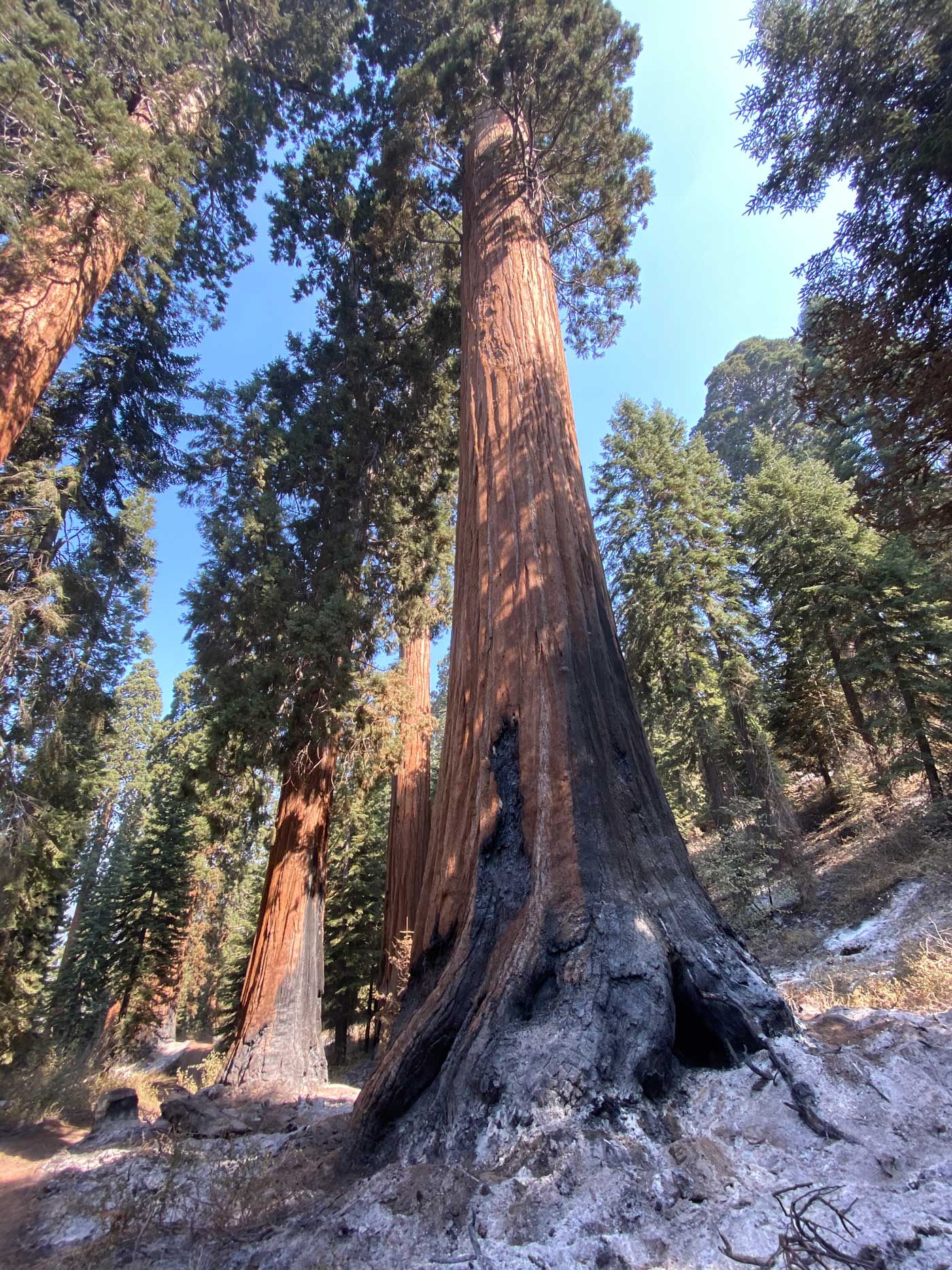
Giant sequoia have a long history of regular wildfire that shaped healthy grove ecosystems. These frequent fires are due in part to frequent lightning ignitions in the hot, dry, fogless summers of the Sierra Nevada, as well as Indigenous burning. Fire scars in trees show that fires in the range occurred roughly every 3-15 years for the last several millennia. Because fires were so frequent, they were not generally very severe since there was not enough time for significant fuel to build up.
As a species, giant sequoia are well-adapted to wildfire. Their bark can be up to four feet thick, insulating their living tissue from the heat of the fire. Their exceptional height and elevated crowns also help them escape the flames of a surface fire. Even their cones are cued to open after a wildfire, ensuring a massive seed release is aligned with the ideal conditions created by the fire—bare mineral soil and canopy gaps that increase sunlight on the forest floor. Small patches of localized, high-intensity fire are needed to provide those ideal conditions, but widespread high-severity fire was not common in the past.
20th Century Begins a Dangerous Era for Giant Sequoia
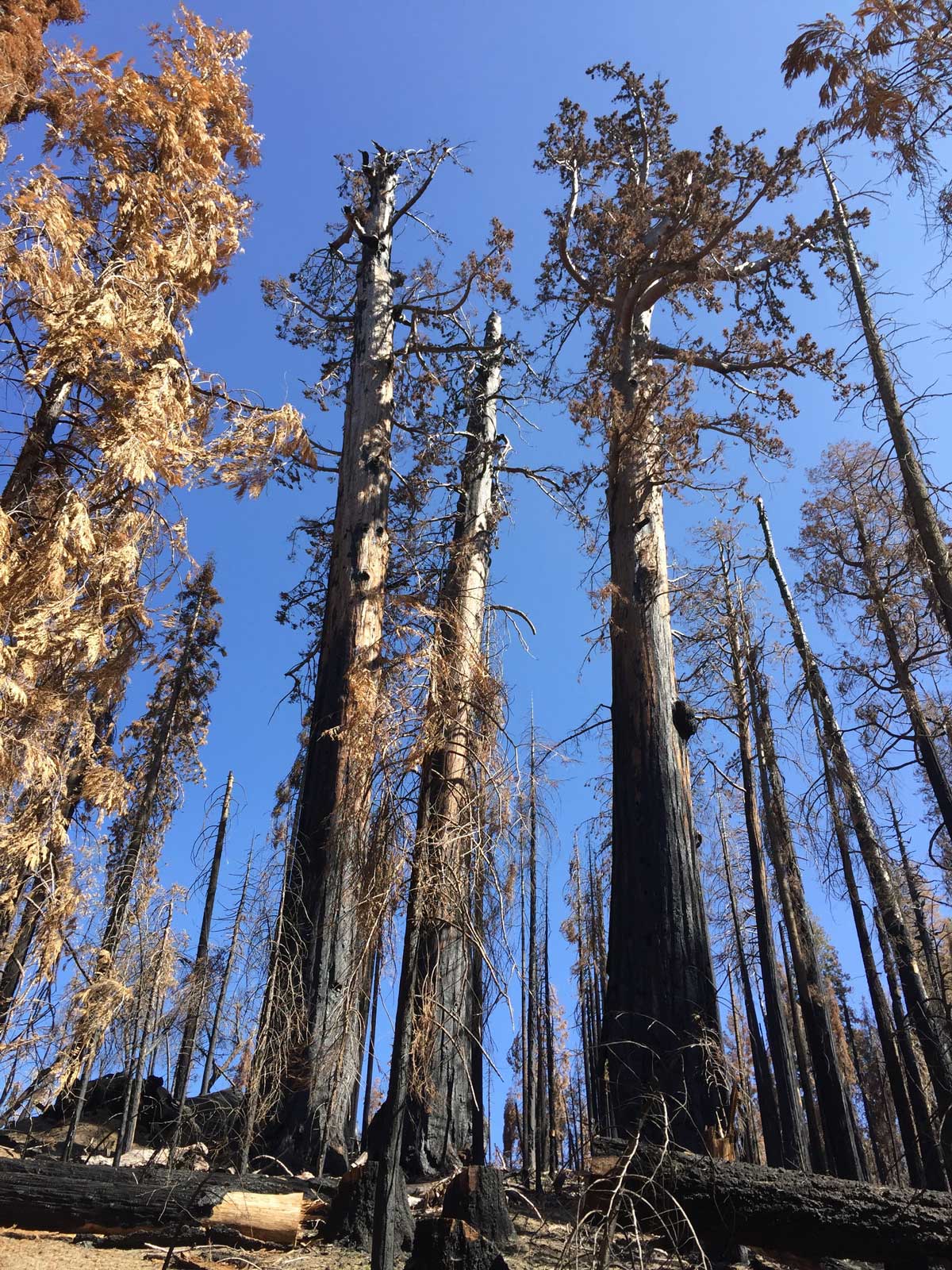
Fire exclusion has resulted in a dramatic change to the structure of the forest. Excessive amounts of woody debris have accumulated, as have smaller trees such as incense cedar and white fir, creating fuel conditions that are dramatically higher than historic norms. Now, when a wildfire burns into a giant sequoia grove, the fire might burn too hot and kill the ancient giants. The League is studying the loss of many monarchs following two 2017 wildfires that burned into two groves, each with large areas of high severity. Although these hot fires can result in prolific seedling regeneration, the millennia-old trees that were lost are irreplaceable.
We do not yet know how severely this year’s wildfires burned through the roughly 16,000 acres of sequoia groves. We do know that at least some areas burned at lower severity, in which case the fire may have even been restorative. However, there have been some reports of more severe fire, which can burn entire crowns, killing ancient trees. The League hopes to work with Giant Sequoia National Monument, Cal Fire, and Sequoia and Kings Canyon National Park to study how this fire has affected giant sequoia populations.
This species cannot sprout back to life when its crown is killed by fire, so when the trees are gone, they’re gone.
FIRE IN THE COAST REDWOODS
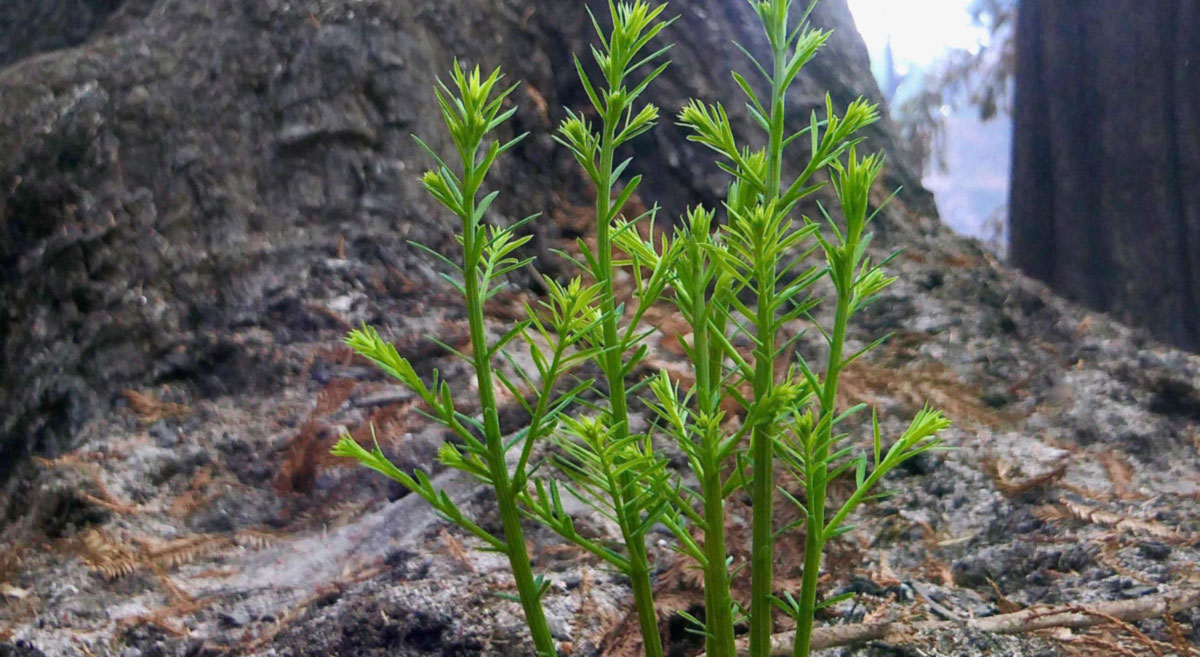
Coast redwood fire history is a little more complicated than that of giant sequoia. Coastal areas get less than 25 percent of the number of lightning strikes as the Sierra Nevada, and foggy, humid conditions mean that few of these will spread into large wildfires, unless they are timed with a heat wave as we experienced in August 2020. Historically most fires in the coast redwood range were set by Indigenous peoples managing the landscape.
Fire frequency was highly variable. Some sites in the northern end of the range burned as infrequently as every several hundred years. Other research shows that from the early 1700s, fire was mostly frequent, with a median fire interval of anywhere from 6-50 years, getting more frequent toward the hotter, drier south. Although Indigenous burning likely influenced these forests and this species for a long time, areas far from settlements likely saw less fire. Furthermore, the species has been around long enough that there were likely some periods and some sites that were not significantly influenced by Indigenous burning, making fires less frequent. Higher fuel loads from less frequent fires can lead to more severe fires, and so consequently, coast redwoods have adapted tolerance to both low- and high-severity fire. They have thick bark that can insulate their living tissue from any fire type and, remarkably, have the capacity to sprout from their trunks even after total crown loss. Fires can also stimulate sprouting from the trees’ bases, creating “fairy rings.” And because their seeds need bare mineral soil to germinate and survive, fire enables new redwoods to regenerate from seeds.
20th-Century Challenges to Coast Redwoods
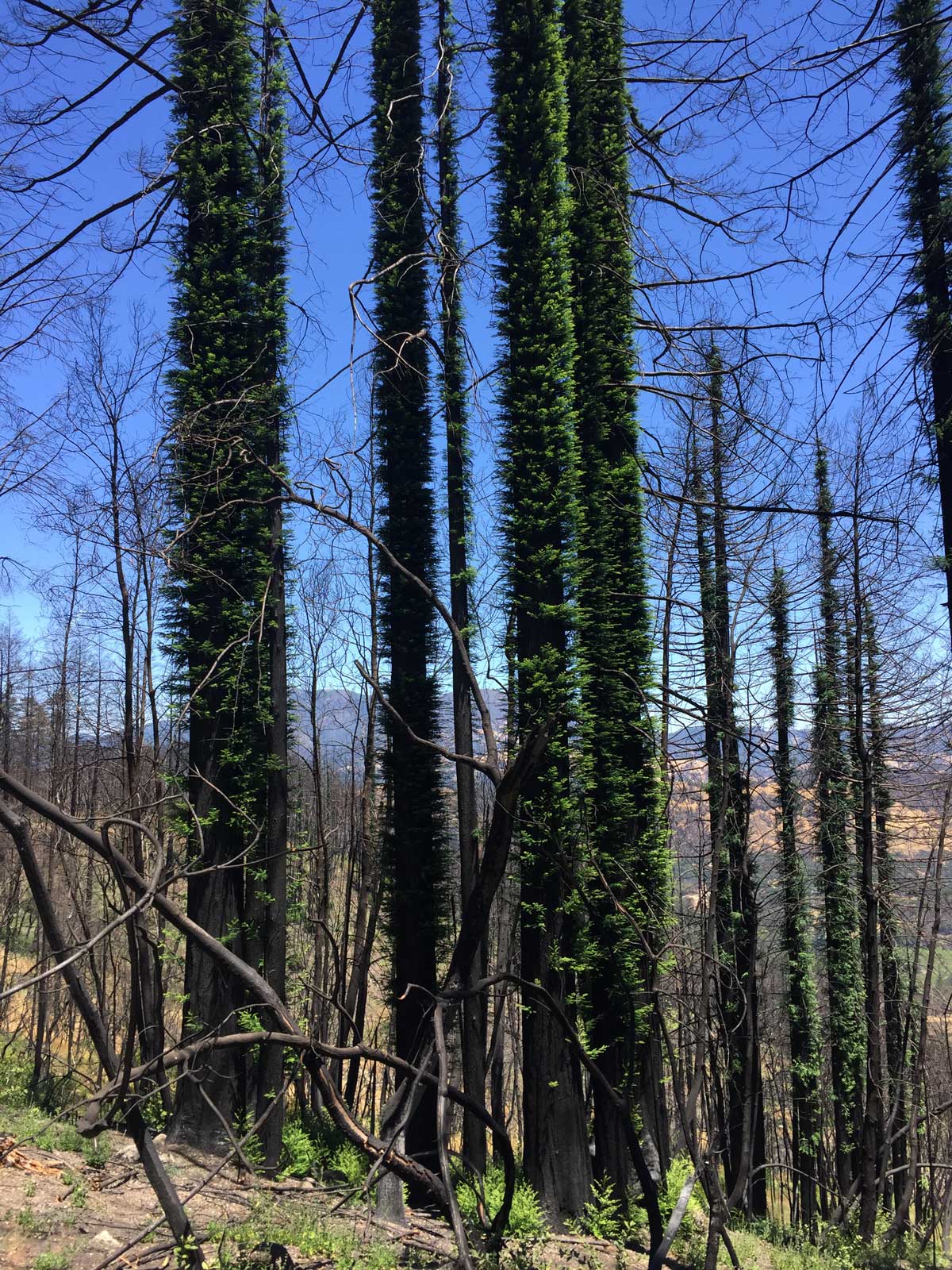
When we think about modern fires in the coast redwoods, it again is a tale of two forests—the old growth and second growth that is recovering from past logging. In the old growth, the exclusion of Indigenous burning practices has allowed for an increase in dead woody debris and brush on the forest floor. This increase is not as great as in the Sierra because the more humid climate breaks down some of that material, but it is still elevated compared to mid-19th century levels. The tree densities in old-growth forests haven’t changed much, however, because there have not been significant increases in the densities of trees that pose a significant fire risk, like the shade-tolerant white fir and incense cedar that have filled in the understory of giant sequoia stands. This means that when a modern wildfire burns in old-growth coast redwood forests, the excess fuel can lead to a more severe fire than the forests would have experienced if regular Indigenous burning had occurred, but the trees’ evolutionary adaptation to severe fire—trunk sprouting—means they can survive. Their crowns will take a long time to recover, but most will make it. Accumulated fire or wind damage can eventually weaken trees enough that some will likely die just from falling over.
Douglas-fir is a common tree species in redwood forests, but it cannot sprout. So where the fires burned hot, many were likely killed, including old growth. Because the endangered marbled murrelet often prefers the nesting platforms in old-growth Douglas-fir over coast redwood, their loss could mean permanent losses to available marbled murrelet habitat. This will shift the forests’ species composition toward redwood dominance, but it also means the loss of old Douglas-fir trees in the central coast forests, or the loss of grand fir and hemlock trees if fires were to burn old growth further north.
Despite this overall good news for old-growth coast redwoods, we do need to think about what kind of fire we want in these stands, and how we think about fires in the context of past logging and habitat fragmentation. When the trees burn severely, it will take years for their crowns to redevelop. Severe fire can also impact the habitat for other species. For example, the endangered marbled murrelet needs nesting platforms in old-growth trees with a lot of protective cover. Even though the trees can sprout after total crown loss, the loss of cover from the foliage may mean that they are not able to use this area for some time, and the birds are already on the endangered species list due to the loss of old-growth habitat. Since there is only 5 percent of the old growth remaining in the coast redwood range, it would be far better to care for these lands appropriately and introduce more “good fire” so that they don’t get knocked back quite as hard when a wildfire comes through.
In second growth, the stand conditions have been dramatically altered. After logging, an individual coast redwood stump will often sprout numerous trees in “fairy rings,” which are joined by a cohort of other species such as Douglas-fir and tanoak, creating very dense stands that can elevate the risk of severe fire. Studies have shown that the redwoods in even these stands are largely resilient to wildfire, though very young stands may not have bark thick enough to protect the buds underneath so that the main trunks can sprout. Sprouts will likely still come up from their bases, but if the main trunks die, it would set back stand recovery. With so many of our coast redwoods living in these young and intermediate stands, it’s essential to understand how these forests responded to fire. It’s also essential to allow more of these forests to grow to maturity to ensure that they quickly regain their natural fire resilience, and to reintroduce fire where appropriate to manage the fuel load.
DOING BETTER FOR OUR FORESTS
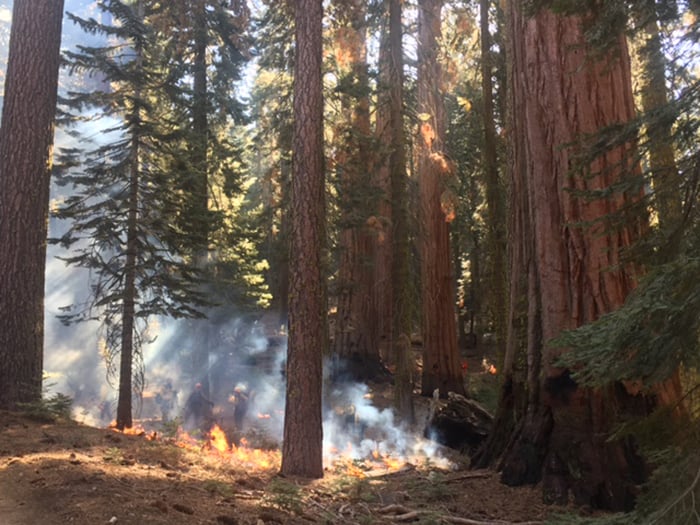
We are at a critical decision point. If we want to avoid severe wildfires that are detrimental to our forests, we need to act on climate change, improve our forest management, and learn to live with “good” fire. We need to reduce our emissions and slow climate warming, as well as support legislation that can help get us there.
We also need to improve our forest management to increase fire resilience, using a variety of management techniques. One effective tool is mechanical thinning, which is using chainsaws or other machinery to remove some of the smaller trees that have accumulated as a result of fire exclusion. But ultimately, restoring fire is the most important approach because it does not just remove some of the trees as thinning does, but it also reduces the woody debris on the forest floor, which is critical for reducing the risk of severe fire. Restoring fire also supports important ecological processes, including nutrient cycling, seedling regeneration (particularly in giant sequoia), and creation of habitat structures like trunk cavities.
Reintroducing fire can happen in two ways. In remote areas, it can include allowing lightning strikes to burn when the conditions are conducive to good ecological effects. This is usually more appropriate in higher-elevation forests where there are cooler, wetter conditions, which is more conducive to restorative effects. In the warmer, lower-elevation forests, prescribed fires generally must be used before wildfires in the hot summer can burn through without causing undesirable consequences. Prescribed fires are intentionally set by fire managers under very controlled conditions, and they are generally conducted in spring and fall, when the temperatures are lower and humidity is higher.
Scientists and forest managers have long understood the need for this good fire on the landscape, but we are not yet applying it at large enough scales. According to the California Air Resources Board, only about 125,000 acres per year are being treated with prescribed burning. To get to the scale that would actually result in forestwide benefits, we will need a great commitment in terms of funding and policy support for public land management agencies and private landowners to conduct this work. Increasing the use of good fire will also require a little more public tolerance of smoke. Although smoke is never pleasant, the smoke from prescribed fire is generally lighter and more transient. And by reducing the severity of future fires, we can ultimately help reduce the dense smoke that is unhealthy for all. By learning to live with more good fire, we can reduce the impacts of severe fires, helping both communities and ecosystems.
This is a critical time for action on climate change and forest and fire management in California. We can either continue to live through record-breaking fires year after year and choke on thick smoke, or we can start actively managing our forests and restore fire resilience to these remarkable landscapes.
This feature appears in the beautiful printed edition of Redwoods magazine, a showcase of redwoods conservation stories by leading scientists and writers, as well as breathtaking photos, answers to readers’ questions, and how you can help the forest.
Join our thousands of members today for only $25, and you’ll get future editions of our Redwoods magazine.

